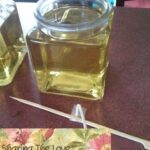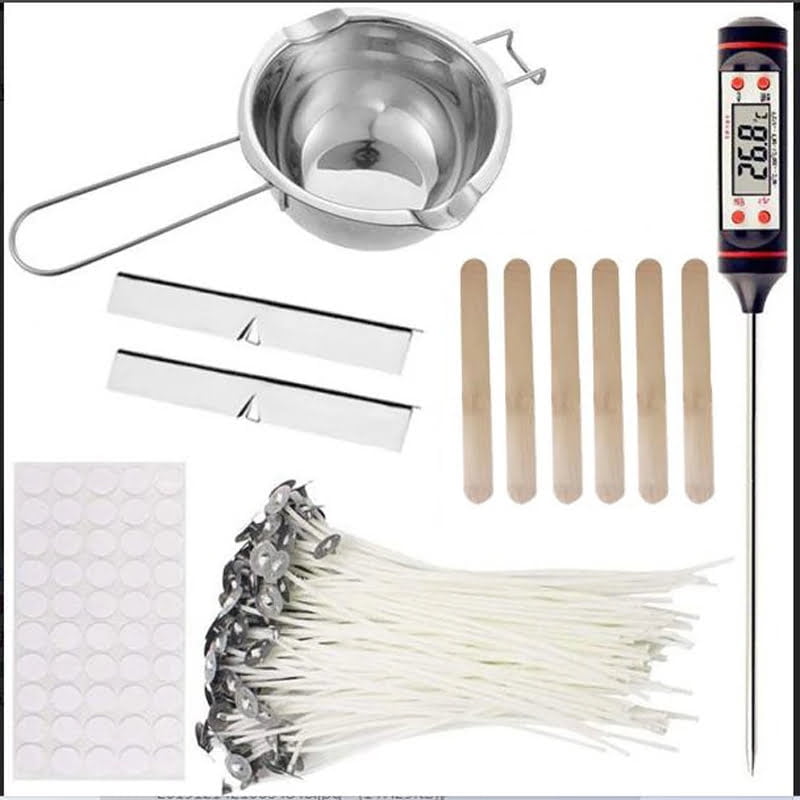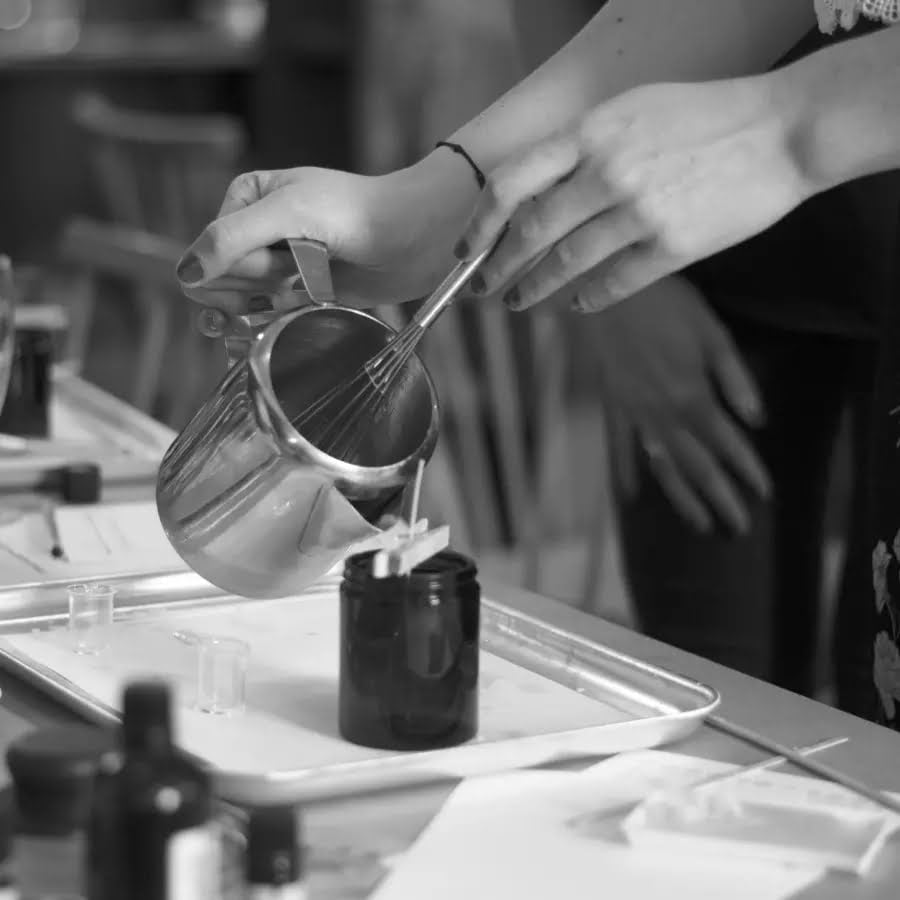Temperature control is a crucial aspect of candle making, as it directly impacts the quality and safety of the final product. Many candle makers often question whether they can use a meat thermometer to monitor temperatures during the candle-making process. In this article, we will explore the significance of temperature control in candle making and address the common query: Can a meat thermometer be employed effectively for this purpose?
Understanding the differences between a meat thermometer and a thermometer designed specifically for candle making is essential. Both thermometers serve different purposes, with variations in functionality and design that may affect their suitability for specific tasks. It is important to use appropriate equipment that ensures safe and accurate measurements throughout the candle-making process.
Before delving into the comparison, let’s briefly explore the basics of candle making and why precise temperature monitoring is vital. Knowing how to safely heat and melt wax, blend fragrances, and add colorants are crucial steps in creating high-quality candles. Precise temperature control during each stage ensures optimal results and helps prevent potential issues such as poor scent throw, uneven burning, or even safety hazards.
The Differences
When it comes to temperature control in candle making, using the right thermometer is crucial for safe and accurate measurements. While some may wonder if a meat thermometer can be used in such a scenario, it’s important to understand the differences between a meat thermometer and a candle making thermometer.
Firstly, let’s discuss the variations in functionality and design between these two types of thermometers. A meat thermometer is specifically designed to measure the internal temperature of meat for cooking purposes. It usually has a sharp metal probe that needs to be inserted into the meat to get an accurate reading.
On the other hand, a candle making thermometer is specifically designed for use in candle making processes. It typically features a longer probe or stem which allows for measuring temperatures at different levels within the wax.
Using suitable equipment is essential in achieving safe and accurate measurements during candle making. While a meat thermometer may seem like an easy substitute, there are limitations to consider. The short metal probe on a meat thermometer might not reach deep enough into the liquid wax or provide reliable readings throughout the process. Additionally, most meat thermometers are not calibrated for the high temperatures typically involved in candle making.
To ensure precise temperature monitoring during candle making, it is recommended to invest in a purpose-built candle making thermometer. These thermometers are specifically designed with features that cater to the needs of candle makers. For instance, they often have longer probes or stems that can reach deep into melted wax for accurate readings at various depths. They are also calibrated for higher temperatures commonly used in candle making processes.
The Basics of Candle Making
In order to better understand the significance of temperature control in candle making, it is important to have a basic understanding of the process itself. Candle making involves melting wax and adding fragrance oils or dyes before pouring the mixture into molds or containers with wicks. The wax needs to be heated to a specific temperature to ensure proper melting and blending of the ingredients. Additionally, monitoring the temperature throughout the cooling process is crucial for achieving optimal results.
To start with candle making, you will need a few essential tools and materials. These include wax (such as soy wax or paraffin wax), a heat source (like a double boiler or a hot plate), fragrance oils or essential oils for scent, colorants if desired, wicks, molds or containers, and equipment for stirring and pouring (such as a melting pot or a pitcher). Each step of the candle making process requires precise temperature monitoring to ensure successful results.
Temperature plays a vital role in various aspects of candle making. Firstly, when melting the wax, it is important to heat it to its recommended melting point. Different types of waxes have different melting points, so it’s important to use a thermometer that can accurately measure these temperatures to prevent overheating or scorching the wax.
Secondly, when adding fragrance oils or dyes to the melted wax, they may have specific temperature requirements for optimal performance. Lastly, during the cooling process, monitoring the temperature ensures that the candles are setting at an appropriate rate and helps prevent any deformations or imperfections.
Working Principle of a Meat Thermometer
In order to understand whether or not a meat thermometer can be used for candle making, it is important to examine its working principle. A meat thermometer is designed to measure the internal temperature of meat to ensure it is cooked safely and accurately. It works by using a metal probe that is inserted into the meat, which then displays the temperature on a digital or analog screen.
The primary purpose of a meat thermometer is to measure temperatures in the range suitable for cooking meat, typically from 32°F (0°C) to 212°F (100°C). It is designed with this specific temperature range in mind and may not be suitable for measuring higher temperatures required in candle making.
Candle making often involves working with melted wax which needs to be heated up to specific temperatures depending on the type of wax being used. These temperatures can exceed the upper limit of what a typical meat thermometer can measure.
Additionally, while some meat thermometers may have a wider temperature range that could potentially cover candle making needs, they may lack other essential features required for accurate measurements in candle making. For example, several models of dedicated candle making thermometers are calibrated specifically for use with wax and include features like adjustable clips or pot clips for secure attachment to a melting container.
Considering these factors, it is recommended to use purpose-built thermometers specifically designed for candle making when monitoring temperatures during the process. This ensures accurate readings and eliminates any risks associated with using equipment that may not be suitable or safe for candle making purposes.
Evaluating the Adaptability of a Meat Thermometer in Candle Making
Analyzing the Features of a Meat Thermometer Against the Requirements of Candle Making
When considering the use of a meat thermometer for candle making, it is important to carefully evaluate its features and compare them to the requirements of candle making. While a meat thermometer may seem like a convenient option due to its widespread availability, there are several factors to consider before using one for measuring temperature in candle making.
One key aspect to assess is the temperature range that the meat thermometer offers. Candle making involves working with different types of wax, which have specific melting and pouring temperatures. A meat thermometer may not be able to accurately measure temperatures above or below its intended range, resulting in inaccurate readings and potential complications during the candle-making process.
Another important consideration is the size and design of the meat thermometer. Candle making often requires inserting a thermometer into a relatively small container such as a pouring pot or a mold. The size and shape of the meat thermometer may not be suitable for this purpose, making it difficult or even impossible to obtain accurate readings in tight spaces.
Enumerating Potential Challenges and Drawbacks in Using a Meat Thermometer
Using a meat thermometer for candle making can present various challenges and drawbacks that can impact the success and safety of your candle-making endeavors. One significant challenge is the lack of precision that may come with using a meat thermometer. Candle making often requires precise temperature control, especially when it comes to adding fragrances or dyes at specific temperatures. Inaccurate readings from a meat thermometer could lead to failed batches or candles with inconsistent color and scent distribution.
Additionally, durability can be an issue when using a meat thermometer for candle making. These thermometers are typically not designed for extended exposure to hot waxes or prolonged use in high-temperature environments. The heat from molten wax can potentially damage the internal components of a meat thermometer, rendering it unreliable over time.
Moreover, safety is a critical concern when using a meat thermometer in candle making. Meat thermometers are not specifically designed for candle making and may not have the necessary safety features, such as heat-resistant handles or guards, to protect against accidental burns. Using a meat thermometer that is not suitable for candle making could increase the risk of injury or accidents during the process.
Exploring Alternative Options for Temperature Measurement in Candle Making
Considering the potential challenges and limitations of using a meat thermometer, it is prudent to explore alternative options for temperature measurement in candle making. Purpose-built thermometers designed specifically for candle making are available and offer several advantages over meat thermometers.
Candle making thermometers typically have a wider temperature range that caters to the varying melting points of different waxes and provides greater accuracy. They also feature a slender design that allows them to be easily inserted into pouring pots or molds without disturbing the surrounding wax.
In addition to purpose-built thermometers, there are alternative methods for measuring temperatures in candle making. Digital laser infrared thermometers can provide non-contact temperature readings from a distance, eliminating the need for immersion in molten wax. Additionally, temperature-sensitive color-changing strips or stickers can be used as an affordable and disposable option for monitoring temperatures during specific stages of candle making.
Ultimately, while a meat thermometer may be tempting due to its availability, it is crucial to fully evaluate its compatibility with candle making requirements before use. Investing in purpose-built thermometers or exploring alternative measurement methods will ensure accurate temperature control and enhance both the quality and safety of your candle-making endeavors.
Safety Considerations
When engaging in candle making, it is crucial to prioritize safety throughout the entire process. While using a meat thermometer for temperature monitoring might seem convenient, it is important to consider potential risks and hazards associated with this choice.
The foremost concern when using a meat thermometer for candle making is contamination. Meat thermometers are designed to be used in raw food products, and their probes may come into contact with bacteria or other harmful substances that can contaminate the wax or other materials used in candle making. This can not only affect the quality of the candles but also pose health risks when candles are burned.
Additionally, meat thermometers may not be suitable for accurately measuring temperatures in candle making due to their limited temperature range. Candle wax requires precise temperature control within specific ranges for melting and pouring, and certain types of waxes even have different optimal temperature ranges. Meat thermometers usually have lower maximum temperature limits compared to specialized candle making thermometers, which could result in inaccurate readings and potentially ruin the candle-making process.
Considering these safety concerns, it is highly recommended to use purpose-built thermometers specifically designed for candle making. These thermometers are manufactured with materials that are safe for use in wax and other candle-making ingredients. They also offer accurate temperature measurements within the necessary range for successful candle making.
By investing in a proper candle making thermometer, candle makers can ensure both their safety and the quality of their final product. It is essential to prioritize safety when engaging in any craft or hobby, like candle making, where there may be potential risks involved. Taking precautions such as using appropriate equipment will lead to a more enjoyable and successful experience while minimizing possible dangers.
Recommended Thermometers for Candle Making
Candle making requires precise temperature control to ensure the proper melting and cooling of wax. While using a meat thermometer may seem like a convenient option, it is not recommended for candle making. Instead, there are purpose-built thermometers available that are specifically designed for this craft.
One recommended thermometer for candle making is a digital candy thermometer. These thermometers are designed to withstand high temperatures and provide accurate readings for hot wax. They often come with a clip that can be attached to the side of the melting pot, allowing for hands-free monitoring. Additionally, digital candy thermometers typically have a wide temperature range, making them suitable for both melting and cooling stages of candle making.
Another popular option is an infrared laser thermometer. These thermometers use infrared technology to measure surface temperatures without direct contact. This makes them ideal for measuring the temperature of melted wax without the risk of contaminating it. Infrared laser thermometers also provide quick and accurate readings, allowing for efficient monitoring during the candle making process.
In comparison to meat thermometers, these purpose-built thermometers offer several advantages. They are designed specifically for candle making, ensuring accurate and safe temperature measurements throughout the entire process. They also come with features that make them more suited for this craft, such as clips or non-contact measurement capabilities.
| Meat Thermometer | Purpose-Built Thermometer |
|---|---|
| Designed primarily for measuring meat temperatures | Specifically designed for candle making |
| May not withstand high temperatures or provide accurate readings in hot wax | Can withstand high temperatures and provide accurate readings in both melting and cooling stages |
| Lacks features such as clips or non-contact measurement capabilities | Includes features like clips or non-contact measurement capabilities for convenience and safety |
Alternative Options for Temperature Measurement in Candle Making
While using a meat thermometer for candle making may seem like a convenient option, there are alternative methods that are better suited for accurate temperature measurement during the candle making process. These alternatives not only ensure safety but also provide more precise readings to achieve the desired results.
One popular alternative to a meat thermometer is a dedicated candle making thermometer. These thermometers are specifically designed with candle making in mind and offer features that cater to the unique requirements of this craft.
Candle making thermometers typically have longer stems than meat thermometers, allowing you to reach into the wax easily without risking burns. They also often come with clips or hooks for attaching to the side of the pot, ensuring stability and preventing accidental contact with hot wax.
Another alternative option is an infrared thermometer or laser thermometer. These devices use infrared technology to measure temperatures without coming into direct contact with the wax or flame. This makes them particularly useful for monitoring temperatures during the melting process or when checking the temperature at various points of your candle mold or container. However, it’s important to note that infrared thermometers may not be as accurate as dedicated candle making thermometers when it comes to precise measurements.
Some candle makers also rely on traditional methods such as using a candy or deep fryer thermometer. While these may not be purpose-built for candle making, they can still provide reliable temperature readings if used correctly. These thermometers usually have long probes and are built to withstand high temperatures, which makes them suitable for measuring wax temperatures accurately.
Conclusion
In conclusion, while a meat thermometer may seem like a convenient and accessible option for temperature monitoring in candle making, it is not the most suitable or reliable tool for this purpose. The key differences between a meat thermometer and a candle making thermometer lie in their functionality and design.
A meat thermometer is designed specifically for measuring the internal temperature of meat, whereas a candle making thermometer is built to withstand the high temperatures required in the melting and pouring processes of candle making.
Using a meat thermometer in candle making can present several challenges and drawbacks. Firstly, a meat thermometer may not have the range or accuracy needed for precise temperature control in candle making. This can result in inaccurate readings and potentially lead to flawed candles. Additionally, some meat thermometers are not designed to handle the extreme heat of molten wax, which can cause damage to the thermometer or pose safety risks.
For safe and accurate temperature monitoring in candle making, it is recommended to invest in purpose-built thermometers specifically designed for this craft. These thermometers are typically made from materials that can withstand high temperatures and provide accurate measurements within the required range for candle making. Moreover, they often feature additional features such as long probes and clip attachments, which make them more practical and user-friendly during the candle making process.
Frequently Asked Questions
Can a meat thermometer be used for wax?
While a meat thermometer and a wax thermometer may appear similar, they are not interchangeable. A meat thermometer is specifically designed to measure the internal temperature of cooked meats and poultry, therefore it is not suitable for use with wax.
Wax thermometers, on the other hand, are specifically calibrated to accurately measure the temperature of melted waxes used in candle making. It is crucial to use the appropriate thermometer for candle making to ensure safety and achieve desired results.
What kind of thermometer can I use for candle making?
When it comes to candle making, it is recommended to use a dedicated candle thermometer. These thermometers are specially crafted with features that make them ideal for measuring the temperature of melted wax precisely.
Candle thermometers often have an extended probe that enables easy access to the bottom of your melting container, allowing you to get an accurate reading without risking burns or injuries. Additionally, these thermometers typically have temperature ranges specific to candle making, ensuring you can monitor your wax within the desired heating parameters.
Can you use candy thermometer for candle making?
While a candy thermometer and a candle-making thermometer share some similarities in their intended purpose – precise temperature measurement – they are not interchangeable for candle making purposes. Candy thermometers are primarily designed for cooking confectioneries like caramel and fudge, where temperatures usually do not exceed 400°F (204°C). On the other hand, candle-making often requires working with hotter temperatures that can exceed those typical in candy making.
Therefore, using a candy thermometer for melting wax in candle-making could lead to inaccurate temperature readings and potentially affect the quality of your candles or compromise safety protocols. It is best practice to use a specialized wax or candle-making thermometer when engaging in this craft.

Welcome to my candle making blog! In this blog, I will be sharing my tips and tricks for making candles. I will also be sharing some of my favorite recipes.





